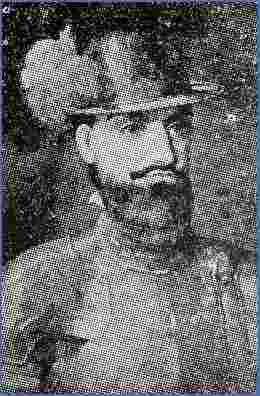Gaspar de Espinosa
(1484 - 1537)
|
|
| Gaspar de Espinosa was born in Medina del Campo, Valladolid,
Spain in 1484. Spanish soldier, in 1484; . In 1514 he came to
Nuestra Señora de Belen del Darien with Pedrarias Davila as Alcalde Mayor
of the expedition. Pedrarias was sent there to replace the leader of the settlement.
One of Pedrarias first task, was to find proof of Vasco Nuñez de Balboa
for the damages done to Martin Fernandez de Enciso, the Alcalde Mayor of
Nueva Andalucía, and Diego de Nicuesa, the governor of Castilla de
Oro. , Espinosa had the duty of presiding at the first trial of Balboa,
since he was the Alcalde (chief judge). Because Espinosa had taken a
liking to Balboa, and the support Balboa had by Bishop Quevedo, his life
was spared, and only imprisoned.
When Pedrarias declared war against Pocorosa, cacique of the natives of the area, he was not able to complete the job, because he became ill and had to go back to Antigua. Espinosa was given the job of completing the job, and left the port of Acla (Bones of Men) with about 300 men, horses and dogs. He attacked the natives, who had about 3,000 warriors, and defeated this opponents. The natives, were terrified by the horses the Spaniards rode into battle, and the dogs the Spaniards set upon them. Espinosa committed many cruelties against the natives, he hung them, burned them, and placed them in front of the mouth of cannons, and blew the apart. He then crossed the Isthmus, collecting treasures from all of the natives that they encountered. He raided the territories of Natá and Chirú, collecting large quantities of gold. He pursued the cacique Paris, who had gathered many of the caciques with over 20,000 warriors, and rebelled against the Spaniards. He thought that he had trapped Paris, and in July, 1516, he attacked a large native force. Again, the horses and dogs, ruled the day, and he was able to defeat his foe, although Paris got away. Paris, would retaliate against the Spaniards he caught by pouring melted gold down their throats, since that was the thing the Spaniards were killing the natives and destroying their villages, for. Espinosa established a fort in Panama in 1517, as the most southern post of the sting of post that were established across the Isthmus. Here, he left Hernando Ponce the Leon, in command, and returned to Antigua with 8,000 pesos of gold and 2,000 captive slaves. When he arrived in Antigua, he found that Balboa had again been imprisoned by Pedrarias. As Alcalde Mayor, we had to preside over the new trial. Pedrarias planned this trail and had arranged to have men who would give false witness, and phony documents, to convict Balboa. He also did this when Balboa's supporters were in Spain, and quickly had him convicted, and executed on April 16, 1517, before Balboa's friends had a chance to come to his aid. In 1518, Espinosa set off to capture Paris, and recover all of the gold that Paris had taken off Badajoz, when he defeated Bandajoz force, that had secured from the natives, and was on his way back to Antigua, when he was attacked by Paris. Espinosa with a force of 150 men, sailed west to Paris' territory, and took cayucas up the river to get to Paris' village. He found that Paris had died, and his son, Cutara was now cacique, and the gold was not to be found. After searching for the gold for some time, they finally discovered it, buried with the dead cacique. They were able to recover over 40,000 castellanos worth of gold. He was also able to acquire a large quantity of Maize from a cacique named Biruquete. In 1520, when the new governor of Castilla de Oro, Lope de Sosa, arrived in Antigua. Pedrarias had already move the seat of government to Panama, and traveled to Antigua to greet the new governor. As luck would have it for Pedrarias, Sosa died on the day he arrived at Antigua, and Pedrarias, through much cunning, retained the position of governor. Espinosa served as judge for the investigation, and ruled in favor of Pedrarias. This assured Espinosa, that he would have no problems and continue the status quo. Early 1519, Espinosa went to explore two island, on the coast of
Panama, there were reported to contain much gold. This expedition was
unsuccessful and he then met up with a force under the command of Pizarro and De
Soto. The combined force was unfortunate and were not able to find any
gold on any of the islands. They then went to Tierra Firme where they had
better luck. After a short battle with a cacique, they were able to get a
large quantity of gold. They continued on the gulf of Parita, where he founded the
town of Nata. Francisco Companon was left to command the expedition, while
he went back to Panama. Pedrarias wanted to visit the new colony
himself. Later that year, leading another expedition, Espinosa, with
a fleet of 5 ships, was able to reached San Lucar were they found large
quantities of gold and pearls. In 1537, during the civil war between Pizarro and Almagro, Pizarro asked him to go to Peru and mediate, which he did. When he arrived in Cuzco, he got sick and died on February 14, 1537 |
